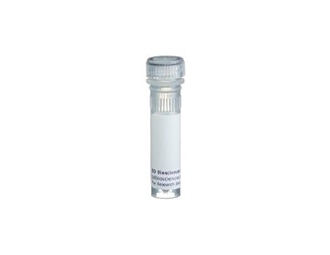-
Training
- Flow Cytometry Basic Training
-
Product-Based Training
- BD FACSDiscover™ S8 Cell Sorter Product Training
- Accuri C6 Plus Product-Based Training
- FACSAria Product Based Training
- FACSCanto Product-Based Training
- FACSLyric Product-Based Training
- FACSMelody Product-Based Training
- FACSymphony Product-Based Training
- HTS Product-Based Training
- LSRFortessa Product-Based Training
- Advanced Training
-
- BD FACSDiscover™ S8 Cell Sorter Product Training
- Accuri C6 Plus Product-Based Training
- FACSAria Product Based Training
- FACSCanto Product-Based Training
- FACSLyric Product-Based Training
- FACSMelody Product-Based Training
- FACSymphony Product-Based Training
- HTS Product-Based Training
- LSRFortessa Product-Based Training
- United States (English)
-
Change country/language
Old Browser
This page has been recently translated and is available in French now.
Looks like you're visiting us from {countryName}.
Would you like to stay on the current country site or be switched to your country?


Regulatory Status Legend
Any use of products other than the permitted use without the express written authorization of Becton, Dickinson and Company is strictly prohibited.
Preparation And Storage
Product Notices
- Since applications vary, each investigator should titrate the reagent to obtain optimal results.
- Please refer to www.bdbiosciences.com/us/s/resources for technical protocols.
- Caution: Sodium azide yields highly toxic hydrazoic acid under acidic conditions. Dilute azide compounds in running water before discarding to avoid accumulation of potentially explosive deposits in plumbing.
Companion Products

.png?imwidth=320)
The 2E9 antibody reacts with CD34, an ~110 kDa glycoprotein on the surface of bone marrow-derived progenitors of hematopoietic and endothelial cells. In the bone marrow, 1-3% of cells are stained with 2E9 mAb; whereas peripheral blood leukocytes are not stained. Immunomagnetic depletion of lineage-committed leukocytes from bone marrow results in about three-fold enrichment of CD34+ cells. CD34+ hematopoietic progenitors may be mobilized to the peripheral blood treatment with recombinant canine granulocyte colony-stimulating factor and stem-cell factor. Furthermore, CD34 is expressed on some canine leukemias. In the mouse, CD34 is also expressed on high endothelial venules (HEV) of lymph nodes and, in this form, functions as a ligand for L-selectin. CD34 expression on HEV of dog lymph nodes has been demonstrated with polyclonal anti-CD34 antibody.
Development References (10)
-
Baumheter S, Singer MS, Henzel W, et al. Binding of L-selectin to the vascular sialomucin CD34. Science. 1993; 262(5132):436-438. (Biology). View Reference
-
Bhattacharya V, McSweeney PA, Shi Q, et al. Enhanced endothelialization and microvessel formation in polyester grafts seeded with CD34(+) bone marrow cells. Blood. 2000; 95(2):581-585. (Biology). View Reference
-
Bruno B, Nash RA, Wallace PM, et al. CD34+ selected bone marrow grafts are radioprotective and establish mixed chimerism in dogs given high dose total body irradiation. Transplantation. 1999; 68(3):338-344. (Clone-specific). View Reference
-
Georges GE, Storb R, Bruno B, et al. Engraftment of DLA-haploidentical marrow with ex vivo expanded, retrovirally transduced cytotoxic T lymphocytes. Blood. 2001; 98(12):3447-3455. (Biology). View Reference
-
Goerner M, Horn PA, Peterson L, et al. Sustained multilineage gene persistence and expression in dogs transplanted with CD34(+) marrow cells transduced by RD114-pseudotype oncoretrovirus vectors. Blood. 2001; 98(7):2065-2070. (Clone-specific). View Reference
-
Hagglund HG, McSweeney PA, Mathioudakis G, et al. Ex vivo expansion of canine dendritic cells from CD34+ bone marrow progenitor cells. Transplantation. 2000; 70(10):1437-1442. (Clone-specific). View Reference
-
McSweeney PA, Rouleau KA, Storb R, et al. Canine CD34: cloning of the cDNA and evaluation of an antiserum to recombinant protein. Blood. 1996; 88(6):1992-2003. (Biology). View Reference
-
McSweeney PA, Rouleau KA, Wallace PM, et al. Characterization of monoclonal antibodies that recognize canine CD34. Blood. 1998; 91(6):1977-1986. (Immunogen). View Reference
-
Niemeyer GP, Hudson J, Bridgman R, Spano J, Nash RA, Lothrop CD. Isolation and characterization of canine hematopoietic progenitor cells. Exp Hematol. 2001; 29(6):686-693. (Biology). View Reference
-
Vernau W, Moore PF. An immunophenotypic study of canine leukemias and preliminary assessment of clonality by polymerase chain reaction. Vet Immunol Immunopathol. 1999; 69(2-4):145-164. (Biology). View Reference
Please refer to Support Documents for Quality Certificates
Global - Refer to manufacturer's instructions for use and related User Manuals and Technical data sheets before using this products as described
Comparisons, where applicable, are made against older BD Technology, manual methods or are general performance claims. Comparisons are not made against non-BD technologies, unless otherwise noted.
For Research Use Only. Not for use in diagnostic or therapeutic procedures.
Report a Site Issue
This form is intended to help us improve our website experience. For other support, please visit our Contact Us page.